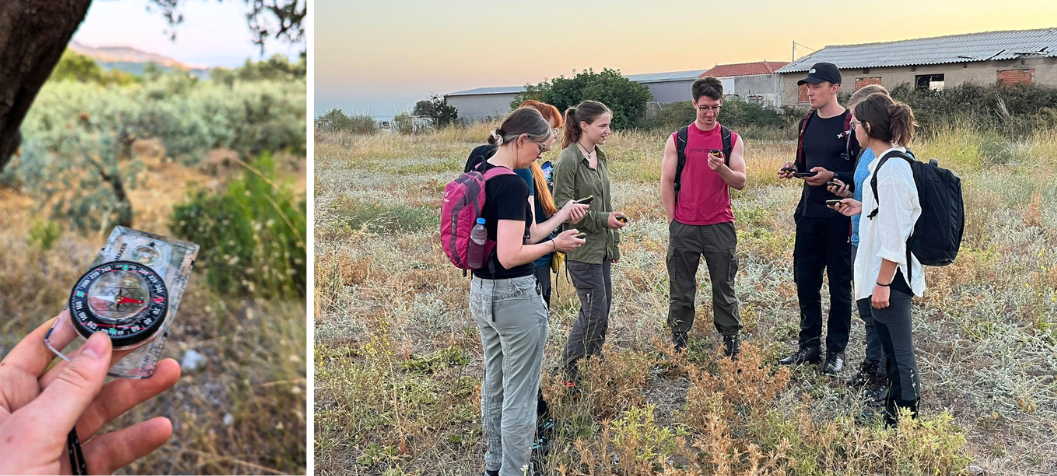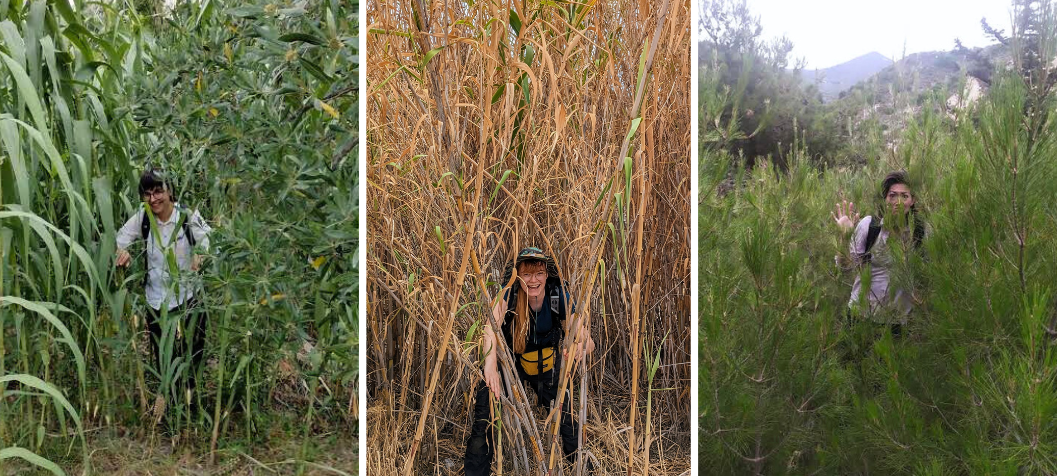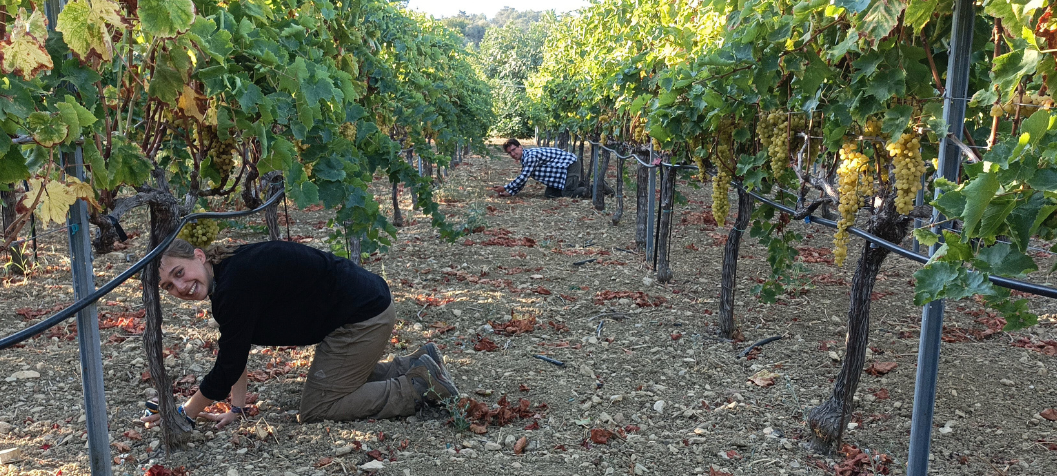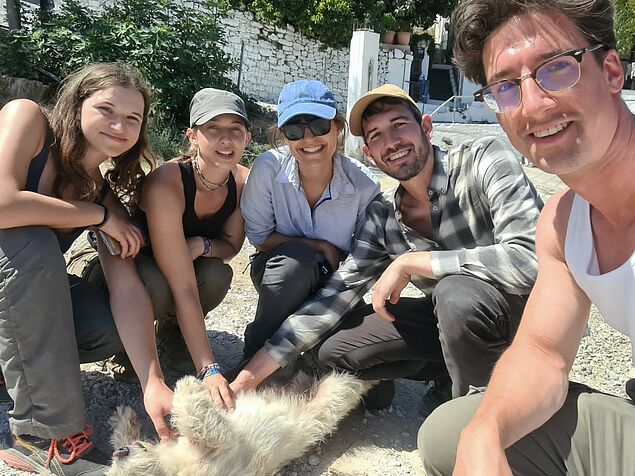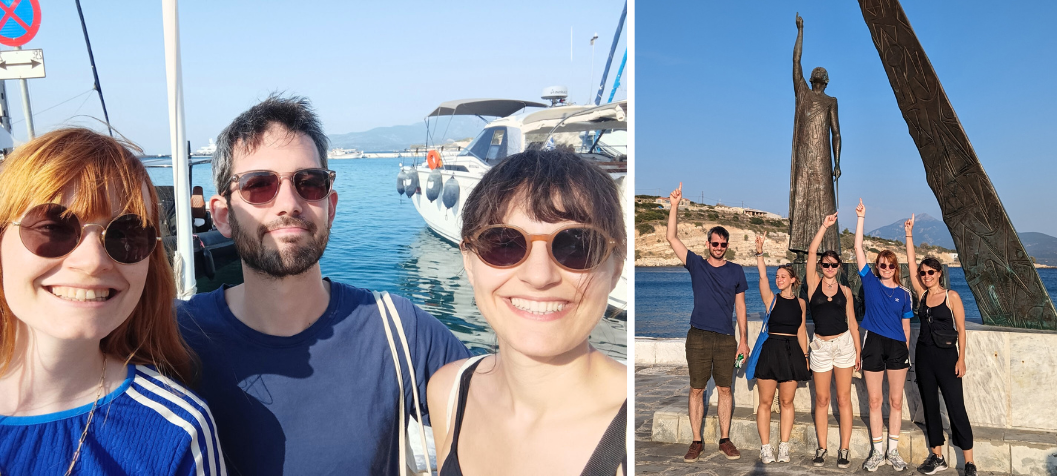Samos, Sun, and Sherds - Archaeological Survey in the Aegean
The Western Area of the Samos Archaeological Project recently embarked on its third adventure since 2021. Over the course of five weeks, our archaeological survey focused on exploring the regions around Karlovasi and the northwestern part of the island. The project is an international collaborative effort led by Prof Dr Naoíse Mac Sweeney from the University of Vienna, Dr Michael Loy, and Dr Anastasia Christophilopoulou from the University of Cambridge. This year, four University of Vienna students enthusiastically joined the team.
From 28 August to 29 September, we crossed the island in two teams of intensive fieldwork, divided into 50x50 metre grids, covering an area of 4.8 square kilometres. The first team aimed to cover all the areas that had been identified as points of interest based on ethnographic research and local knowledge. The second team, always heading North, with a touch of humour, called themselves "One Direction" and enjoyed the music of the homonymous band during their breaks as they crossed the island in long transects.
Equipped with a clicker to count the pottery sherds and a compass to guide us, both teams headed out into the field just in time for sunrise. Over the course of five weeks, we clicked a staggering 38,919 times and counted just as many pottery sherds, 2267 of which were collected for diagnostic purposes. The salty sea breeze and the scent of the olive groves accompanied us on our working days as we navigated our way through the landscape. Sometimes we had to crawl under vines every few metres like James Bond, because remember: planted vines don't follow the direction of the compass. We often met friendly islanders sharing their local knowledge, orange juice and fruits.
Each step was a journey through time, with each find revealing a new chapter in the history of Samos. Based on the distribution of the sherds, we identified up to 18 potential areas of interest. Of particular interest was an area between the hills with a lot of Hellenistic and Roman pottery, and another area around Vryses. We were also delighted to revisit the area of interest around Velanidia, where in 2022, we identified a high concentration of Archaic sherds.
Our international team always created a cheerful atmosphere, even when the midday sun was beating down on our heads. We laughed together with the students from the UK, Greece and Switzerland, discussed some of our finds at length, or searched together (and always successfully in the end) for the starting point of the new 50m grid. We were fascinated not only by the archaeological finds but also by the breathtaking view of the deep blue sea, which stretched out in front of us and welcomed us in the afternoons.
We spent our free time exploring the island. Dinners in cosy tavernas were our well-deserved reward after a long day in the field. At weekends we climbed a waterfall, experienced city life in Vathy or embarked on a quest to find the best beaches on the island. Of course, there were also the obligatory archaeological highlights! During a visit to the famous sanctuary of Hera, Dr Jan-Marc Henke (German Archaeological Institute) guided us around the site and shared his expertise with us. Another of our weekend adventures took us to the Eupalinos tunnel, a masterpiece of ancient engineering. Hidden deep inside the island, the excursion made us feel the fascination of the technical achievements of our ancient counterparts.
All in all, Samos, Sun, and Sherds is an exciting and educational summer activity and we look forward to next season!
Happy fieldwalking everyone,
Astrid Feiel, Fabiola Heynen, Eleni Kopanaki, Alina Schöllbauer

